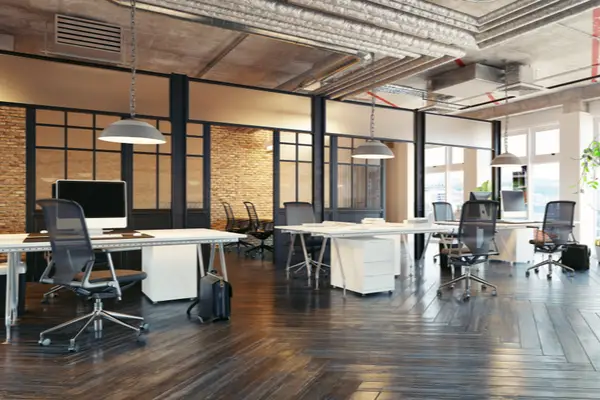
There are several tips to occupy office space rentals as a small business. When leasing or renting office space, consider budget, location and size. Of course, buy office insurance in case of fire, natural disasters or other issues. More so, landlords usually require a 3 or 5 year lease. Naturally, many small businesses prefer shorter leases. As a small business owner, try to find a landlord that offers month by month leases as your company grows. Here are the essential basics to occupy office space rentals as a small business.
Understand Financial Commitment
First, when looking to occupy rental space as a small business, understand the financial commitment. Before setting a budget, you should break up your finances. Determine cash flow, ability to assume risk and projected annual revenue. Additionally, consider if you need a commercial real estate loan to cover lease costs. Certainly weigh the pros and cons of possibly going into debt to grow your small business. In addition, you should implement a business guide to protect yourself financially and legally. There are many steps and websites you can use to calculate your expected return on your investment. Of course, this can save you time, energy and money. Definitely understand the financial commitment before leasing or buying office space rentals.
Set A Maximum Budget
Secondly, as a small business trying to occupy rental space, set a maximum budget. Determine your monthly budget to simplify the searching process. Set your price limit to be shown the available spaces in that range. Start by determining the average cost per square foot in your preferred area. Typically, it is calculated by taking the annual lease amount and dividing it by the total square feet of rental space. Then, multiply the average per square foot by your required measurements for your expected annual budget. Additionally, include utility and common area maintenance (CAM) fees in your budget. Utilities average around $2 per square foot annually while CAM fees can cost up to 30% of your annual lease payment. Certainly determine your maximum budget before occupying rental space.
Determine Square Footage
Next, a popular tip for a small business looking for rental space is to determine the required square footage. Typically, commercial rental spaces are quoted based on Rentable Square Foot (RSF). This encompasses the private premise’s square footage, or Usable Square Footage (USF). Plus, it includes the pro rata share of the estate’s common areas such as staircases, bathrooms and lobbies. Understand the difference between RSF and USF to determine which you will be charged for. Of course, measure the USF yourself or request exact dimensions from the landlord. Therefore, you can accurately compare the size and costs of the space your business may occupy. If the measured space is inaccurate, you can potentially cut costs on business property by negotiating with the landlord. Certainly, determine square footage to find a space large enough for your business and to see how you will be charged.
Find A Location
Then, find a location for your small business that has your preferred square footage. Compare rent prices before deciding where to set up business. Additionally, evaluate the building condition as well as the specific space. Ensure that the interior and exterior are in good condition so it won’t affect your business. For example, ensure the electrical system runs smoothly to avoid blackouts, lost work and unwanted complications. Of course, research the surrounding area as you don’t want to work in a location with high crime rates. This can help prevent robberies, hacking and break-ins. Definitely find a location that is as accessible as possible for all employees but is also safe and usable.
Consider Purchasing
Finally, if possible, consider purchasing the office space rental property for your small business. Buy the space to lock in monthly payments through a fixed mortgage. Therefore, you will have no stress about rising rents. Additionally, you get building equity and tax benefits. There are sites to help you determine if purchasing is correct for you. However, you must own about 51% of the property. You can receive details about different SBA loans offered to afford buying commercial property. In fact, by owning the building, you can rent out other vacancies and earn extra income as a landlord. Of course, by purchasing the entire office space rental property, you can run your business, become a landlord and earn additional income.
There are various tips when occupying office space rentals as a small business. First, understand the financial commitment to ensure you are ready to buy or lease an office space for your small business. Of course, determine your maximum budget to find spaces in your price range. Next, determine square footage to see what you will be charged for and if you have enough space for your business. Then, find a safe but accessible location for optimized business operations. Finally, consider purchasing the office space rental to avoid rising rent and to own the property for better conditions. These are the top tips to follow when trying to occupy office space rentals as a small business.
 Business First Family Business, Accounting, Finance, Investing, Marketing And Management
Business First Family Business, Accounting, Finance, Investing, Marketing And Management